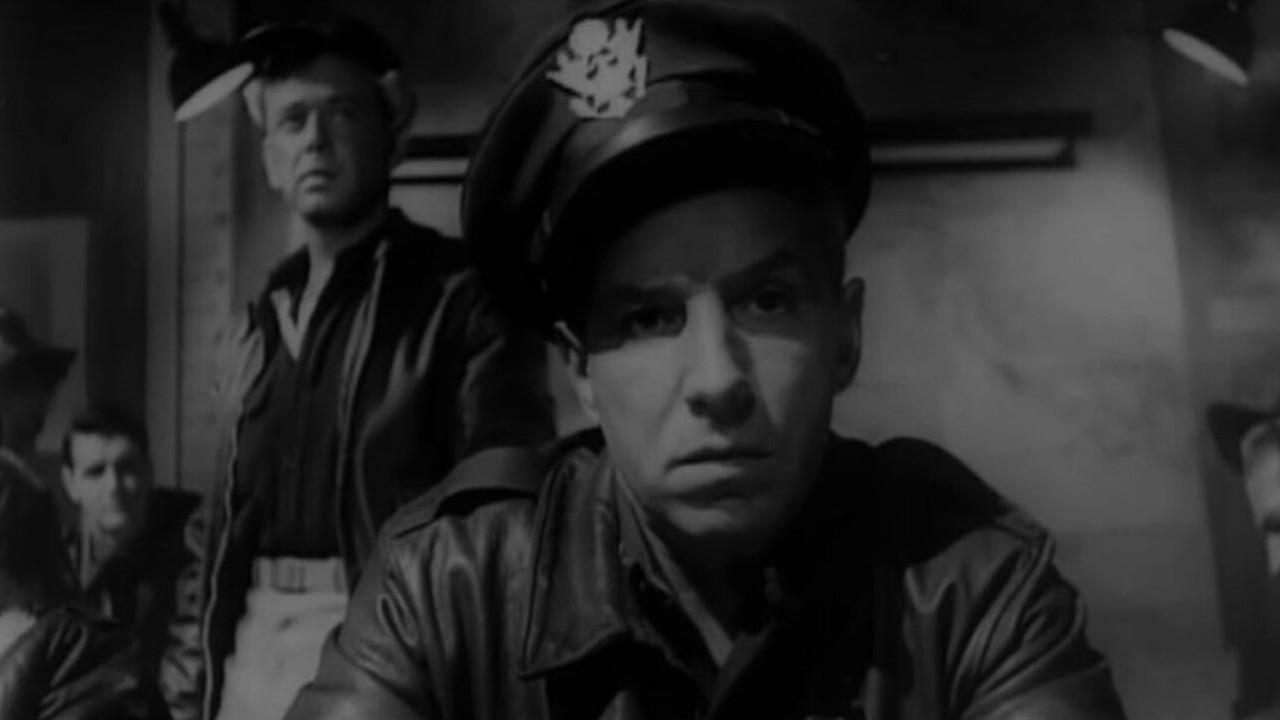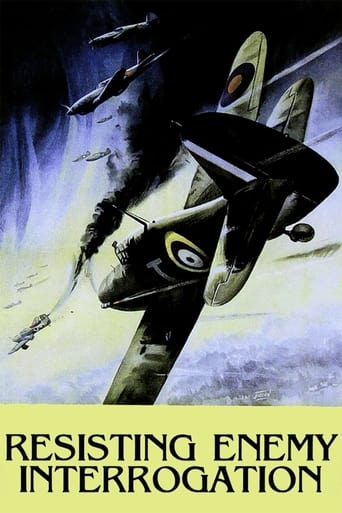

Because this film doesn't appear to have been made for viewing by the public at large, it's very hard to rate it. Instead, I assume that it was a Hollywood film meant as a training aid to show flight crews the importance of keeping quiet and recognizing various means the enemy might use to interrogate them. I am not sure how true all the scenarios are, though they seemed way too subtle and nice for Nazis. I assume in reality, if the Germans really wanted to get these secrets they would probably just torture it out of them. However, soldiers needed to be aware of the mind games that might be played and the consequences to America fliers if they gabbed to their captors.When seen today, the movie is quite fascinating for historical reasons. Plus, it's neat to see some stars in various roles (such as Kent Smith as a Nazi as well as Arthur Kennedy and Don Porter as American fliers). Considering I am an old movie fan AND a history teacher, it's natural I'd enjoy it. However, even for NORMAL folks, it's pretty entertaining and worth a look.
... View MoreDear All,Please read "The Interrogator," by Raymond F. Toliver. Toliver tells the true story of Hanns Joachim Scharff, one of the Luftwaffe's best P.O.W. interrogators. Sheer psychological tricks let him extract loads of information from his "guests." He tortured nobody because he did not need to do so. Years after the war, in the United States, some of these same men threw a party for him, despite the fact that several had felt severe remorse over having inadvertently disclosed so much.How successfully a viewer of "Resisting Enemy Interrogation" could have withheld information from Scharff, I cannot say.Sincerely,Gordon F. Corbett
... View MoreThis film was originally produced and released as a training film for the Army Air Force during WWII. It covers the various (supposed) tactics that the Nazis would use to gather information from American (and other Allied Forces members) pilots and soldiers who are captured. Rather than being a dull, *by the numbers* lesson, however, the filmmakers present a solidly told little story in which the air crew of the mythical B-99 gradually...and presumably unintentionally...give up information that foils the success of a near-future air raid. If you see this, do tolerate a little preaching that occurs at the very end of the film (by an uncredited Lloyd Nolan) since this film WAS intended to teach a lesson; the ending is perfectly suitable for this kind of film. Certainly not on a par with Citizen Kane, but a solid enough piece of film making that deserves to be seen by a wider audience. 7* out of ten.
... View MoreThanks to TCM for giving us an opportunity to see this gem. Made by the Army Air Force's famous First Movie Unit well into the war (1944), this is one of their most polished efforts. It has a simple, but effective narrative: a US air crew of 5 is downed by the Nazis, who use every trick in the book (short of torture) to pump information out of them: ingratiation, intimidation, deceit and psychological welfare. None of the downed fliers means to co-operate with the enemy, but each in his own way contributes some information to their clever Nazis captors, which is then pieced together by the Nazi commanding officer, somewhat flamboyantly portrayed by Carl Esmond. The consequences are disaster.The point of the film as a training device (forcefully driven home by Lloyd Nolan in the closing sequence) was that ANY information, no matter how innocent or trivial seeming on its face, could complete the jigsaw puzzle for Nazi intelligence services. All that should EVER be revealed to ANYONE outside your own crew once you were captured was name, rank and serial number. A simple lesson, you would suppose, but for 70 minutes (rather lengthy by the genre's standards, I think) the point is expertly honed by a fairly effective little drama.In addition to Nolan, the other "big name" actor here is a young Arthur Kennedy, who appeared in many excellent films over the following quarter century.
... View More